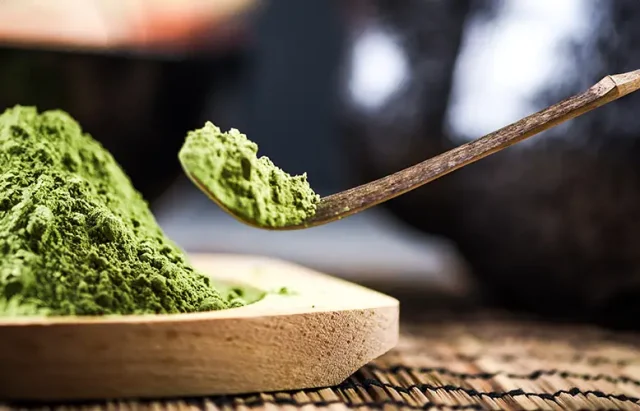
In the expansive search for holistic health solutions, the allure of natural remedies has drawn attention to a diverse range of plants and herbs, among which kratom has emerged as a particularly intriguing option.
Native to the lush landscapes of Southeast Asia, kratom, or Mitragyna speciosa, has transitioned from traditional medicine to a subject of interest in Western wellness circles. Its leaves, rich in psychotropic compounds, offer a spectrum of effects, from stimulation to sedation, depending on the dosage and strain used. This article delves into the multifaceted role of kratom in modern wellness routines, exploring its benefits, uses, and the necessary considerations for its safe and effective incorporation into daily life.
Understanding Kratom and Its Compounds
Kratom’s leaves contain several active compounds, with mitragynine and 7-α-hydroxy mitragynine being the most notable for their impact on the human brain’s opioid receptors.
This interaction is crucial for kratom’s varied effects, which can range from enhancing mood and energy at lower doses to providing analgesic and sedative effects at higher doses. Unlike traditional opioids, kratom’s compounds offer a more nuanced interaction with opioid receptors, potentially reducing the risk of addiction and other negative side effects.
While kratom has been part of traditional medicine in Southeast Asia for centuries, Western interest has surged in recent years.
The tree’s leaves, when consumed, offer varying effects based on the specific strains and the amount taken. This unique interaction is key to kratom’s dual ability to energize users at low doses and provide pain relief and sedation at higher doses. Moreover, these compounds contribute to kratom’s potential in addressing opioid withdrawal symptoms, offering a natural alternative for those seeking to overcome dependency without the use of synthetic drugs.
Kratom in Wellness Practices
Kratom’s adaptability makes it a valuable tool within the wellness community, offering benefits that span physical and mental health.
For individuals managing chronic pain, kratom can serve as a natural analgesic, potentially reducing the reliance on conventional pain medications and their associated risks. Moreover, its calming effects at certain dosages can aid in stress and anxiety management, contributing to a holistic approach to mental wellness.
The holistic approach to wellness encompasses a broad spectrum of practices, and kratom’s flexibility allows it to serve multiple roles within this framework.
Beyond pain management and mental health support, kratom is also being explored for its potential to enhance physical endurance and mental clarity, making it a popular choice among athletes and professionals seeking a natural boost. Its use in traditional medicine for combating fatigue and improving productivity highlights kratom’s adaptability to modern needs.
As individuals strive for a balanced lifestyle that incorporates natural remedies, kratom stands out for its ability to align with both traditional herbal practices and contemporary wellness goals, providing a bridge between the ancient and the modern in the pursuit of health and well-being.
Safety and Regulation
The dialogue surrounding kratom’s safety and legal status reflects the broader discourse on the regulation of herbal supplements. While kratom offers potential health benefits, its effects on the opioid receptors entail a risk of misuse and dependence, particularly with frequent, high-dose use. Consequently, its legal status varies, with some countries and regions implementing restrictions to mitigate potential harm.
The conversation around kratom’s safety and regulation is complex, reflecting broader debates over herbal supplements and natural remedies. Ensuring you’re purchasing the best kratom powder is crucial, as the market’s unregulated nature means product quality can significantly vary.
As with any substance affecting the body’s opioid receptors, there’s a risk of dependence, especially with frequent high-dose use.
Recognizing these risks, some countries and states have moved to regulate or restrict kratom, aiming to balance its potential benefits against possible harms.
This regulatory landscape underscores the importance of conducting thorough, evidence-based research to guide policy decisions. For consumers, the variability in regulation highlights the need for vigilance and research when choosing to incorporate kratom into their wellness routines, ensuring they comply with local laws and understand the potential risks and benefits.
Optimal Use and Considerations
Incorporating kratom into a wellness routine should be approached with care, considering factors such as dosage, strain, and individual health goals. Starting with lower doses can help gauge tolerance and effects, with adjustments made based on personal response.
Additionally, consulting with healthcare providers can ensure that kratom use is aligned with individual health needs and conditions.
Navigating the use of kratom for wellness requires a personalized approach. Individuals interested in exploring kratom’s potential must consider not only the appropriate strains and dosages for their specific needs but also the timing of consumption and its integration into their broader health regimen.
For instance, using kratom for energy or focus suggests a different strain and dosage than using it for sleep or relaxation. Furthermore, integrating kratom with other wellness practices—such as meditation, yoga, or dietary adjustments—can enhance overall well-being.
This holistic integration emphasizes kratom’s role as one component of a comprehensive wellness strategy rather than a standalone solution. As with any supplement, consultation with healthcare professionals can provide guidance tailored to individual health conditions and goals, ensuring that kratom’s use is both safe and effective.
Conclusion
Kratom’s role in modern wellness routines is marked by its versatility and natural origin, offering a unique blend of benefits that can support both physical and mental health.
However, its effective and safe use demands an informed approach, mindful of the nuances of dosage, legal considerations, and personal health objectives.
As the conversation around kratom continues to evolve, so too will our understanding of its place in the holistic health landscape, highlighting the importance of research, regulation, and responsible use in harnessing kratom’s potential as an herbal ally in the pursuit of wellness.





